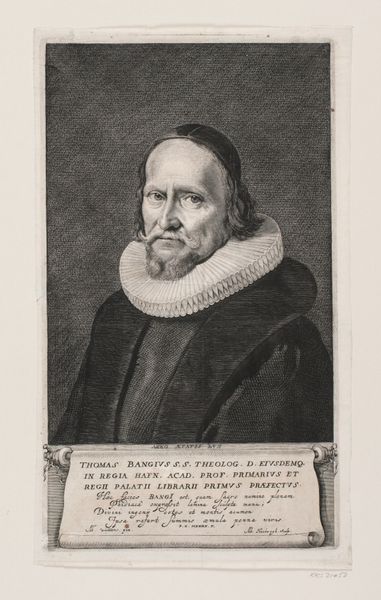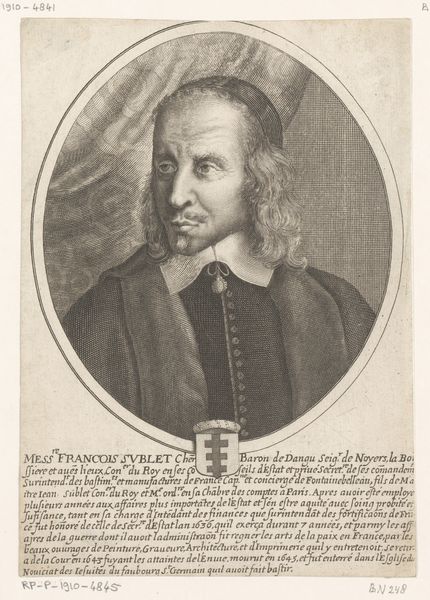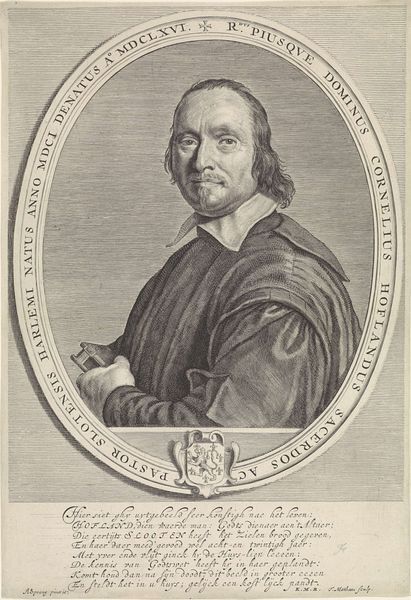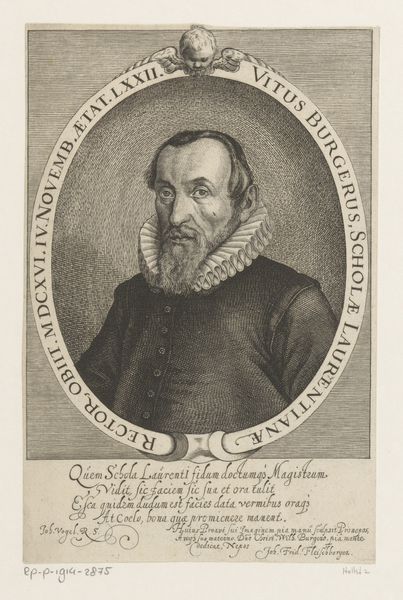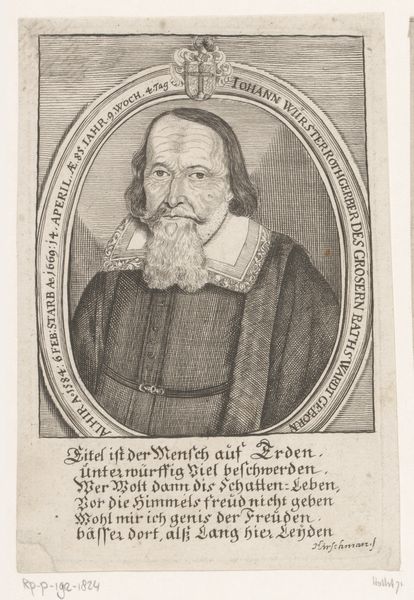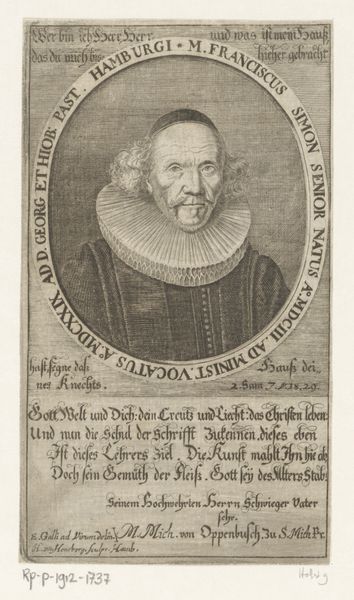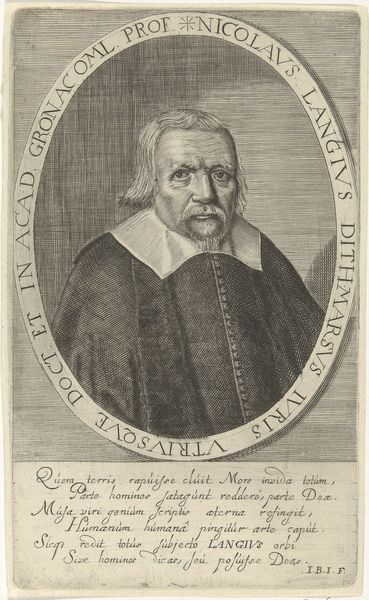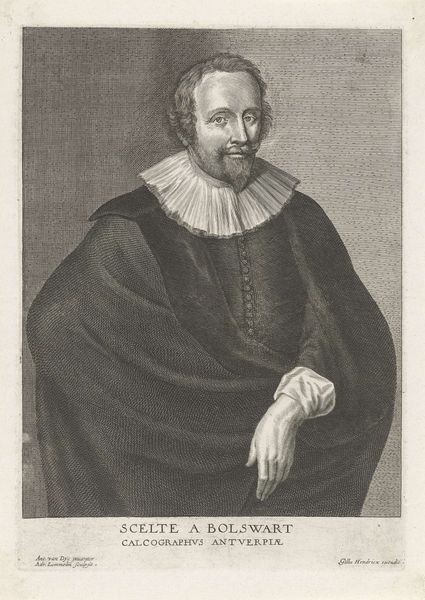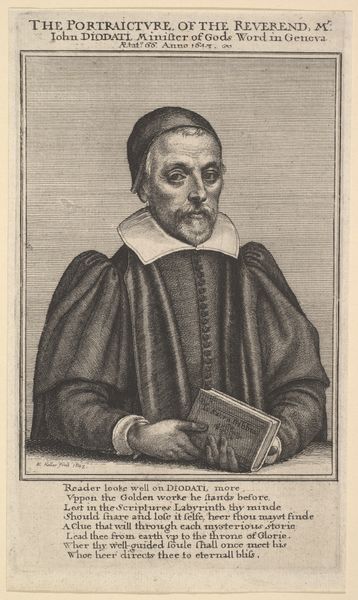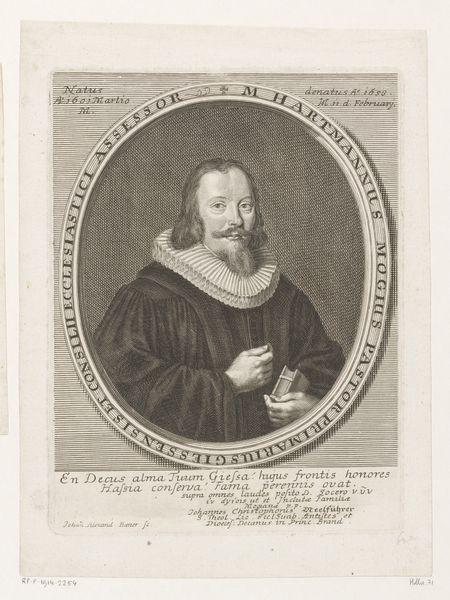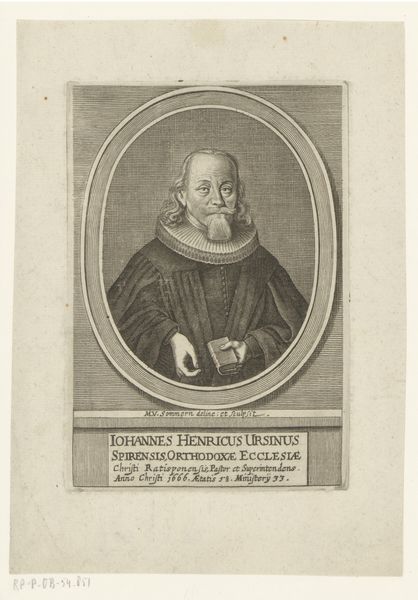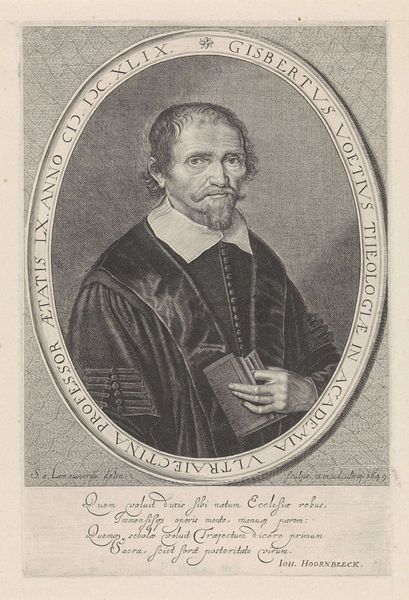
print, engraving
#
portrait
#
baroque
# print
#
portrait reference
#
portrait drawing
#
history-painting
#
engraving
Dimensions: 344 mm (height) x 198 mm (width) (plademaal)
Curator: Let's turn our attention to this intriguing print. Titled "Thomas Bang," it's an engraving made between 1655 and 1659 by Albert Haelwegh and is held at the Statens Museum for Kunst. Editor: Immediately, I'm struck by the contrast. The intricate ruff encircling the subject’s neck juxtaposes with the austere black robes and backdrop, really creating an image focused on the man’s head and face. Curator: Precisely. The meticulous detailing, typical of Baroque portraiture, aims to capture not only the likeness but also the status and intellect of the sitter. Bang was a prominent theologian, professor, and Royal Librarian. Understanding his roles helps us unpack the image's power dynamics. This image signifies authority and learning in a very specific historical context. Editor: Semiotically, the clothing signifies class and education, absolutely, but Haelwegh's technical skill is worth noting. The meticulous rendering, using the printmaking medium, builds dimension through carefully constructed areas of light and dark. Observe how the gaze meets ours head-on. The geometry is all about capturing an inner presence. Curator: Consider also how these images functioned within society. Prints like these were often reproduced and disseminated, solidifying Bang’s image and influence, in effect performing a specific function in early modern power networks. Editor: And, to that end, note the text along the base; its lettering and framing contribute to the piece’s overall construction and help amplify its sense of formality. Curator: Indeed, the text immortalizes him by listing his numerous accomplishments, an essential component of seventeenth-century portraiture—and further reinforcing Bang’s social standing within society. Editor: Analyzing Haelwegh’s artistic choices reveals not merely a portrait but an idea constructed within form, composition, texture, and light—regardless of context, the technical choices work hard to present a picture of power and intelligence. Curator: Right. By analyzing these artworks, considering them within their historical and political milieus, we understand these cultural values communicated through imagery. Editor: By understanding Haelwegh's methods and technical approaches, the portrait can convey deeper cultural messages across many historical eras.
Comments
No comments
Be the first to comment and join the conversation on the ultimate creative platform.
